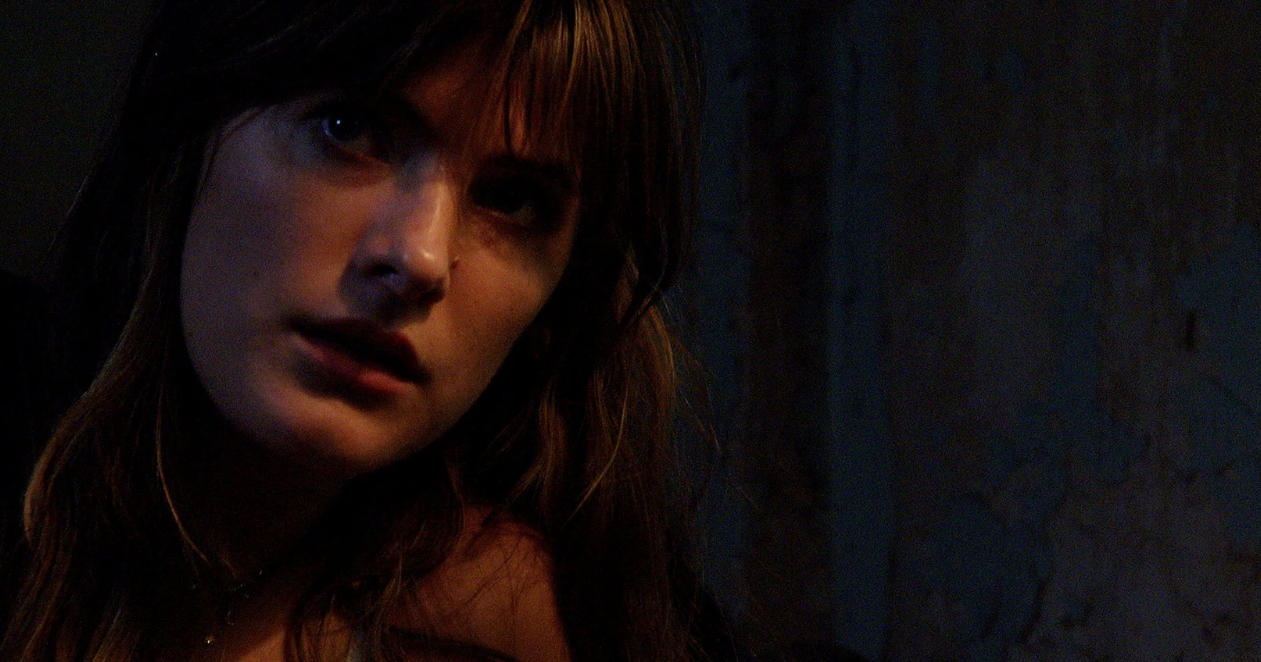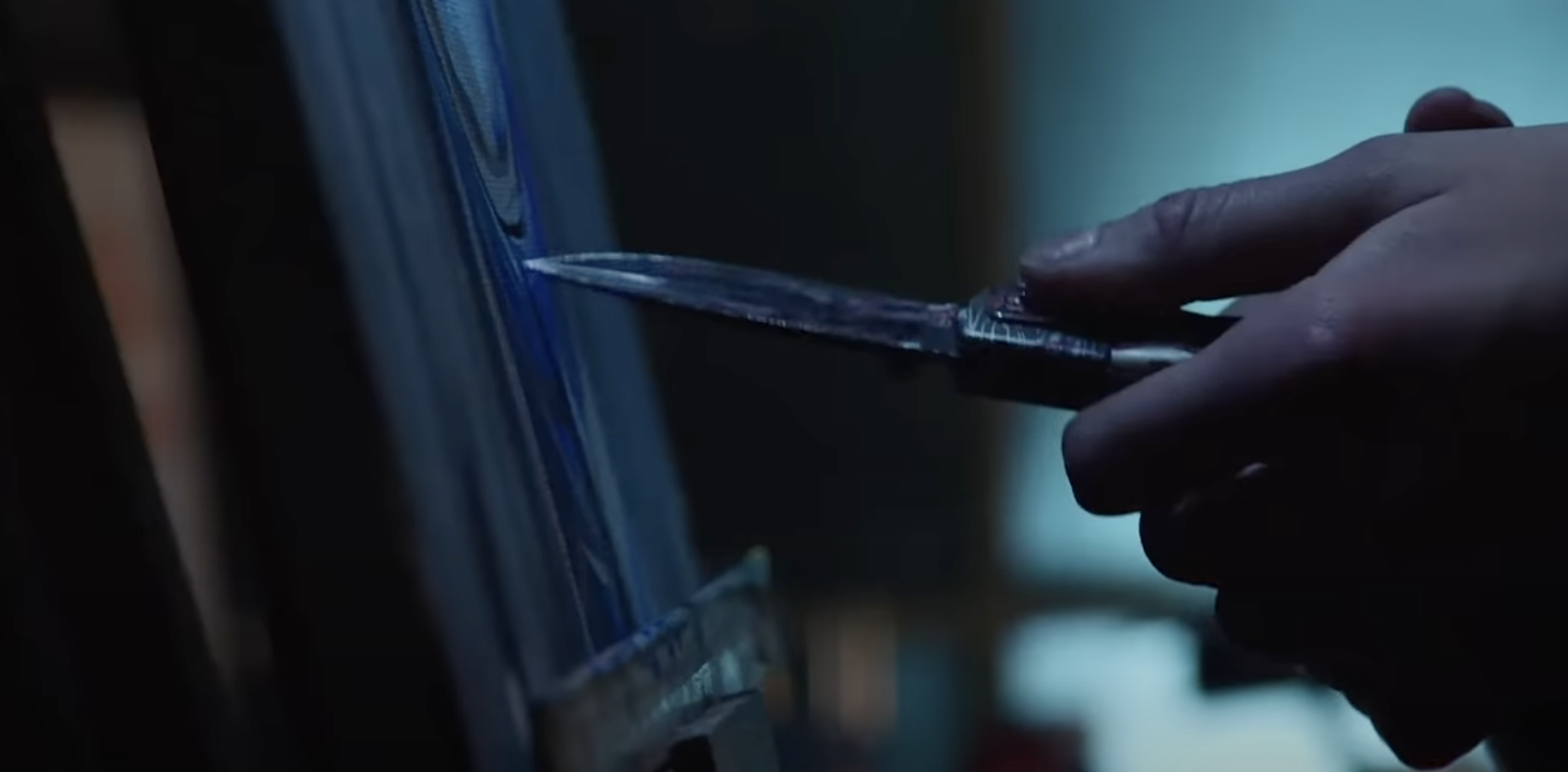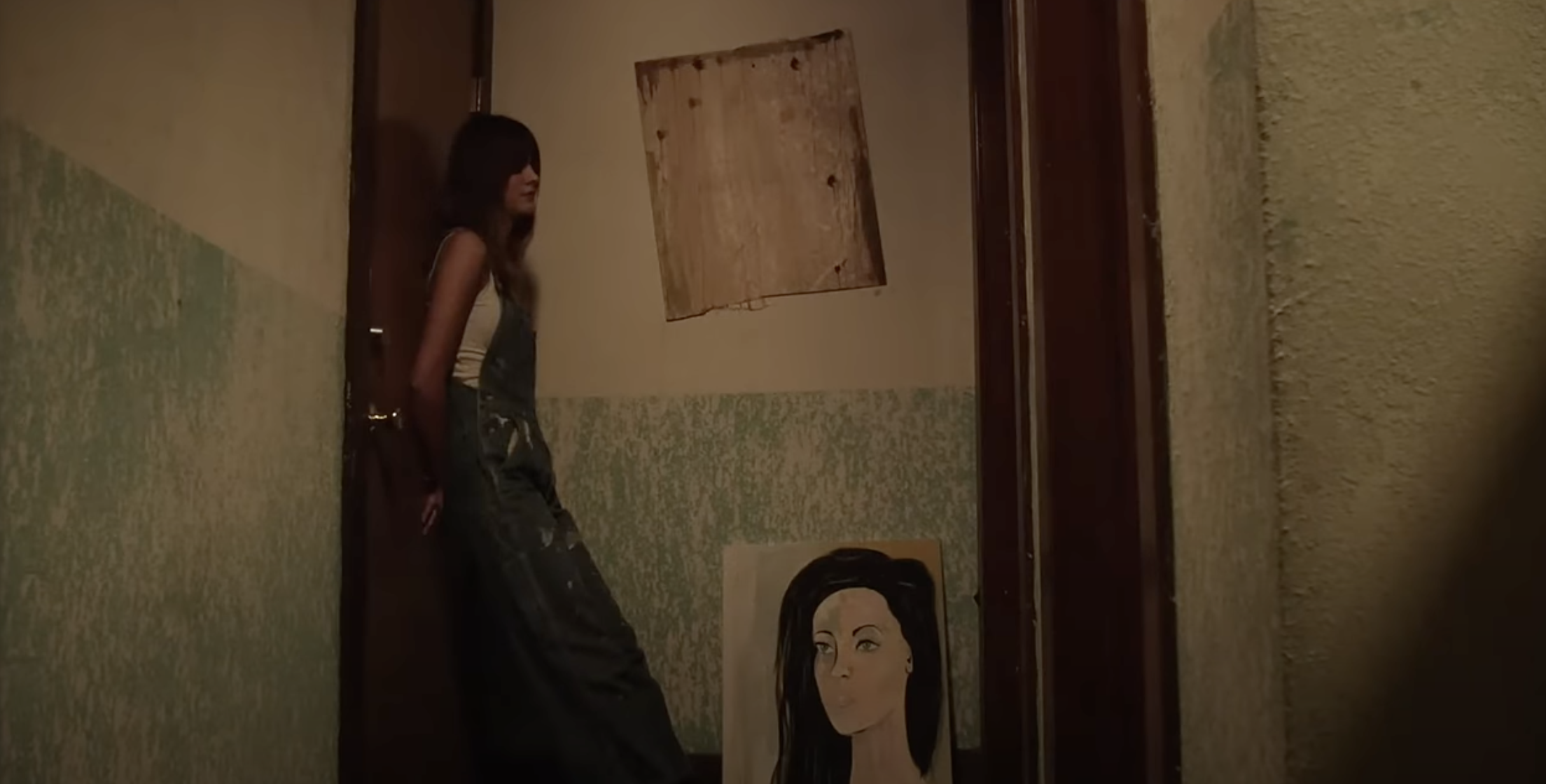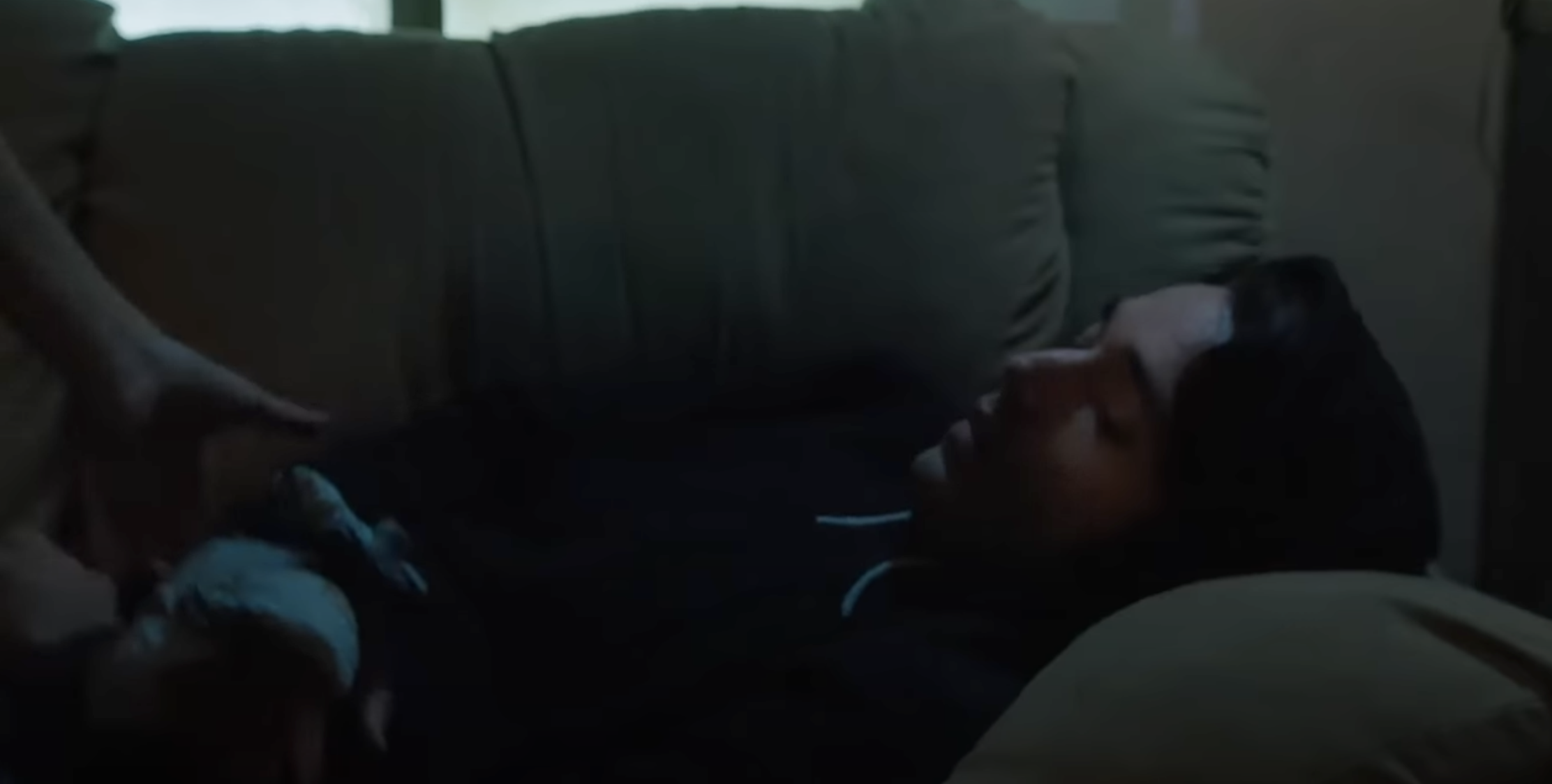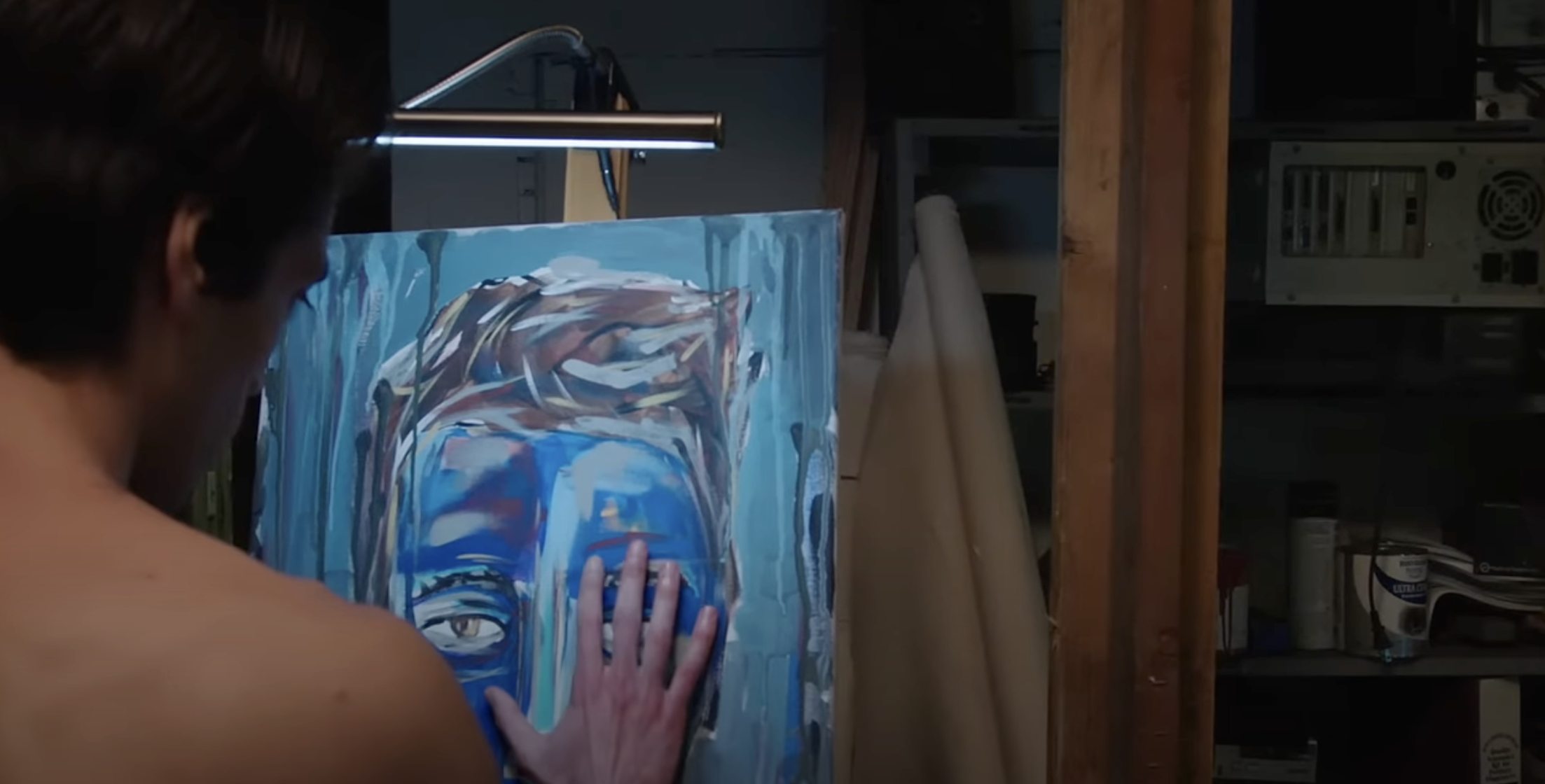Kevin Van Stevenson’s Girl Upstairs is a haunting, slow-burn thriller that blurs the line between fantasy, trauma, and isolation. Written by John Gee, the film introduces us to Dulce (Holly Blair), a reclusive artist who has shut herself away in an apartment above a movie theater. What begins as a quiet portrait of agoraphobia soon spirals into a surreal meditation on creation, obsession, and the fragile boundary between safety and danger.
Dulce’s existence is marked by solitude and fear. Childhood trauma—depicted in fragmented flashbacks of abduction and confinement—has left her unable to face the outside world. Instead, she pours herself into her art, speaking to her canvases as though they were companions. Her world shifts dramatically when she receives a mysterious set of vellum canvases from her gallery contact. These strange, skin-like sheets have the power to bring her paintings to life.
Her first creation, Webster (Gustavo Cintra), emerges as an innocent, childlike figure she nurtures and teaches. Their tentative bond offers Dulce a glimpse of connection, but soon he convinces her to animate another painting: Mimi (Sara Catherine Bellamy). Unlike Webster, Mimi is self-aware and rebellious, quickly recognizing the prison Dulce has built around herself. Tension rises as Mimi’s yearning for freedom collides with Dulce’s desperate need for control, forcing a confrontation with the very fears Dulce has long avoided.
Thematically, Girl Upstairs explores how trauma can shrink one’s world, echoing Seneca’s maxim: “We suffer more in imagination than in reality.” Stevenson and Gee cleverly dramatize this through Dulce’s shrinking apartment world, contrasted against her creations’ hunger for life and experience. The film often recalls the mood of Ruby Sparks or The Wolf Hour, with its single-location intensity and eerie atmosphere.
The performances hold the film together. Holly Blair captures Dulce’s fragility and desperation with subtle precision, making her both sympathetic and unsettling. Cintra and Bellamy balance innocence and menace as the creations who push her toward an inevitable reckoning. The set design—cluttered, dim, and oppressive—mirrors Dulce’s mental state, while the score underscores her paranoia with pulsing unease.
That said, the film’s pacing may frustrate some viewers. Stevenson lingers on atmosphere, sometimes at the expense of narrative momentum. The concept of art literally coming alive is ripe for exploration, yet the story hesitates to fully embrace its horror or fantasy potential. The climax, though unnerving, doesn’t entirely match the buildup.
Still, Girl Upstairs is a striking indie effort. At once psychological drama and uncanny mystery, it offers a poignant reflection on how isolation both shields and imprisons us. For fans of Ti West’s brand of unsettling slow-burns, Stevenson’s film is worth the watch—even if its canvas feels unfinished.
Verdict: A moody, unnerving study of trauma and creation. Imperfect, but memorable.
Jessie Hobson

